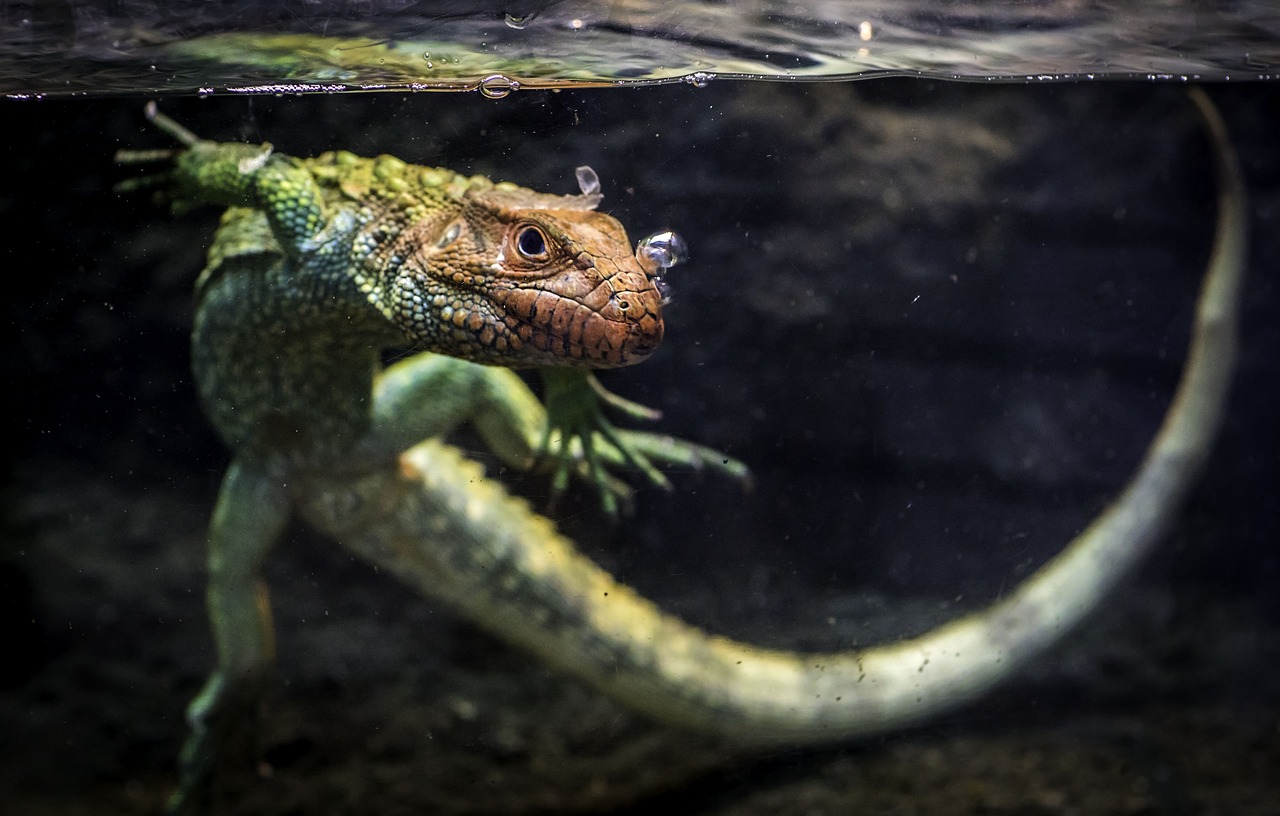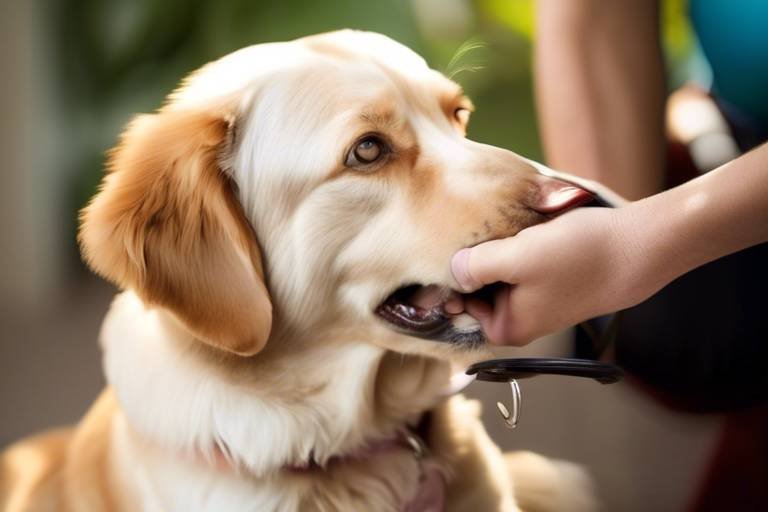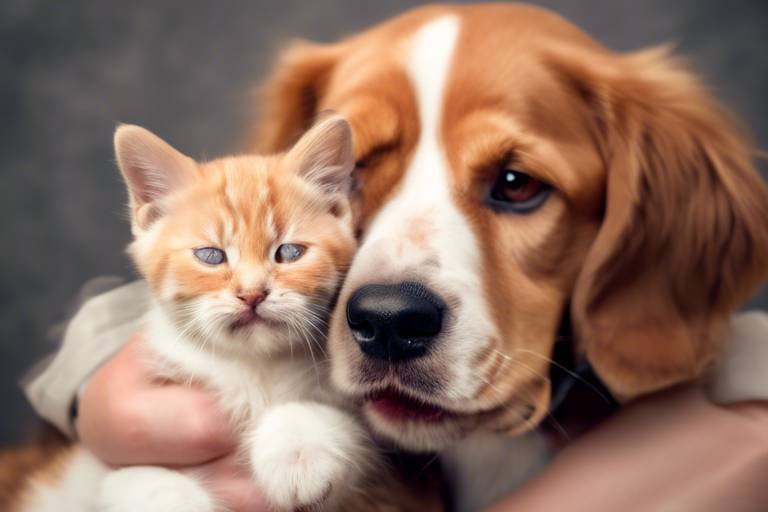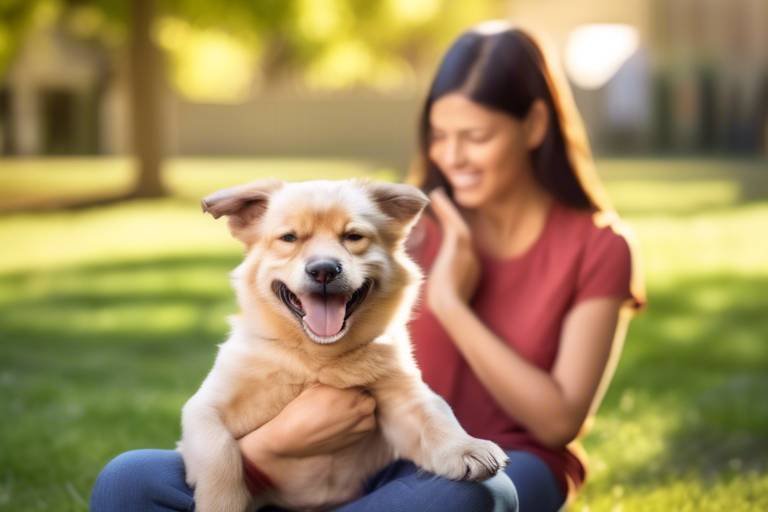Understanding the Lifespan of Adopted Pets
Adopting a pet is one of the most rewarding experiences you can have, but have you ever stopped to think about how long your new furry friend might be around? Understanding the lifespan of adopted pets is crucial not just for planning, but also for ensuring that you can provide the best possible care throughout their lives. Factors like breed, nutrition, health care, and environment all play significant roles in determining how long your pet will live. By being informed, you can make choices that enhance their quality of life and longevity, allowing you to create beautiful memories together.
When you bring a pet into your home, you’re not just gaining a companion; you’re also taking on the responsibility of their well-being. This journey is filled with joy, challenges, and the occasional surprise. Just like humans, pets thrive in loving environments and require specific care tailored to their needs. So, what are the key factors that influence the lifespan of adopted pets? Let’s dive into the nitty-gritty of pet longevity!
One of the first things to consider when adopting a pet is their breed. Different breeds come with different life expectancies. For instance, small dog breeds like Chihuahuas can live well into their late teens, while larger breeds like Great Danes might only reach 7 to 10 years. Understanding these differences can help potential adopters make informed decisions about which pet might be the best fit for their lifestyle. It’s not just about the length of life, but the quality of life they can expect. After all, a happy pet is a healthy pet!
Proper nutrition is another cornerstone in extending the lifespan of adopted pets. Just like us, pets require a balanced diet to thrive. A good diet not only keeps them energized but also helps prevent health issues that can shorten their lives. Imagine fueling a car with low-quality gas; eventually, it’s going to break down. The same applies to your pet! A balanced diet rich in essential nutrients can help keep your furry friend in tip-top shape.
What exactly do we mean by a balanced diet? Pets need a variety of essential nutrients to stay healthy. These include:
- Proteins: Crucial for muscle development and overall health.
- Fats: Provide energy and support cell structure.
- Vitamins: Essential for immune function and metabolic processes.
- Minerals: Important for bone health and other bodily functions.
Ensuring your pet receives these nutrients can significantly impact their health and longevity. It’s like giving them the best tools to build a strong, healthy life!
Now, let’s talk about food options. You might wonder whether to go for commercial pet foods or whip up homemade meals. Each option has its pros and cons:
| Commercial Food | Homemade Food |
|---|---|
| Convenient and time-saving | Can be tailored to specific dietary needs |
| Balanced and formulated for pets | Requires careful planning to ensure balance |
| May contain preservatives | Fresh ingredients but can be more expensive |
Ultimately, the choice depends on your pet’s specific needs and your lifestyle. It’s essential to consult with a veterinarian to determine the best dietary approach for your adopted pet.
Establishing a proper feeding schedule is vital for maintaining your pet’s health. Regular meal times help regulate their metabolism and prevent obesity, which can lead to various health issues. Think of it as setting a routine that provides stability and predictability for your pet. Portion control is equally important; overfeeding can lead to health problems that shorten their lifespan. So, let’s keep those bowls filled just right!
Just like humans, adopted pets can face health challenges. Regular veterinary check-ups are crucial for early detection and management of common health issues. Some common conditions include obesity, dental disease, and arthritis. By being proactive and seeking preventive care, you can significantly enhance your pet's quality of life and longevity. Remember, an ounce of prevention is worth a pound of cure!
Exercise is not just a luxury for pets; it’s a necessity! Regular physical activity helps maintain a healthy weight, boosts mental well-being, and strengthens the bond between you and your pet. Think of exercise as the fun part of their day, where they can let loose and enjoy life! From walks in the park to playful games of fetch, there are countless ways to keep your adopted pet active and engaged.
Different types of exercise are suitable for various pet breeds. For instance, high-energy breeds like Border Collies thrive on agility training, while older dogs may prefer leisurely strolls. Here are some popular activities:
- Walking: Great for all breeds, helps with socialization.
- Playing Fetch: Engages both mind and body.
- Agility Training: Perfect for active breeds and provides mental stimulation.
Let’s not forget about the importance of socialization and play! Engaging in interactive play and social experiences contributes to a longer, happier life for adopted pets. Just like humans, pets need companionship and stimulation to thrive. Regular playtime can alleviate boredom and reduce anxiety, making your furry friend a happier and healthier companion.
Q: How can I tell if my adopted pet is healthy?
A: Regular vet check-ups, a healthy coat, active behavior, and a good appetite are all signs of a healthy pet.
Q: What should I do if my pet is overweight?
A: Consult your veterinarian for a tailored diet and exercise plan to help your pet lose weight safely.
Q: How often should I exercise my pet?
A: Most pets benefit from at least 30 minutes of exercise daily, but this can vary based on breed and age.
In conclusion, understanding the lifespan of adopted pets involves a multifaceted approach that includes breed knowledge, proper nutrition, regular exercise, and preventative health care. By taking these factors into account, you can ensure that your adopted pet lives a long, happy, and fulfilling life by your side.

The Importance of Breed
When it comes to adopting a pet, understanding the importance of breed can make all the difference in ensuring a long, happy life for your furry friend. Just like people, different breeds come with their own unique traits, temperaments, and, most importantly, lifespans. For instance, small breeds like Chihuahuas often live longer than larger breeds such as Great Danes. This disparity can be attributed to various factors, including genetic predispositions to certain health issues, size-related challenges, and even lifestyle needs.
So, why should potential adopters care about breed? Well, knowing the typical lifespan and health concerns associated with a breed can help you make an informed decision that aligns with your lifestyle and expectations. For example, if you’re a busy person who travels often, adopting a breed that requires less attention and exercise might be a wise choice. On the other hand, if you have a more flexible schedule and love outdoor activities, a more active breed could be the perfect companion for your adventures.
Here’s a quick look at some common breeds and their average lifespans:
| Breed | Average Lifespan (Years) | Common Health Issues |
|---|---|---|
| Labrador Retriever | 10-12 | Hip Dysplasia, Obesity |
| Chihuahua | 12-20 | Dental Issues, Heart Problems |
| German Shepherd | 9-13 | Hip Dysplasia, Degenerative Myelopathy |
| Great Dane | 7-10 | Heart Disease, Bloat |
As you can see, breed can significantly influence not just how long your pet might live, but also the types of health challenges they may face. This knowledge empowers you to seek out the best veterinary care, nutrition, and exercise routines tailored to your pet’s specific needs. Moreover, it can help you prepare for the emotional and financial responsibilities that come with pet ownership.
In addition to lifespan, breed characteristics can affect your pet's behavior, energy levels, and social needs. For example, some breeds are known for their high energy and require more physical activity, while others may be more laid-back and content with a cozy spot on the couch. Understanding these traits allows you to create an environment that caters to your pet's natural instincts and habits, ultimately leading to a more fulfilling life for both of you.
So, before you jump into the exciting world of pet adoption, take the time to research and consider the breed that best fits your lifestyle. After all, adopting a pet is a long-term commitment, and choosing the right breed can help ensure that you and your new companion share many happy years together.

Nutrition and Diet
This article explores the various factors influencing the lifespan of adopted pets, including breed, care, health, and environment, while providing insights into how to maximize their quality of life.
Different breeds of pets have varying lifespans. Understanding these differences can help potential adopters make informed decisions about which pet might be the best fit for their lifestyle.
When it comes to our furry friends, nutrition is not just a buzzword—it's a lifeline! The right diet can be the difference between a vibrant, active pet and one that struggles with health issues. Just like humans, pets require a balanced diet to thrive. But what does that mean? It means providing them with the right mix of proteins, fats, carbohydrates, vitamins, and minerals. Think of it as crafting a gourmet meal that caters to their unique needs. For instance, a high-energy dog might need more protein to fuel its adventures, while a less active cat may require fewer calories to avoid weight gain.
To ensure your adopted pet is living its best life, it's essential to understand the key nutrients they need:
- Proteins: Vital for growth, repair, and maintenance of body tissues.
- Fats: Provide energy and help absorb certain vitamins.
- Vitamins: Support various bodily functions, from vision to immunity.
- Minerals: Necessary for bone health and metabolic processes.
By ensuring your pet receives a balanced diet rich in these nutrients, you can help them maintain a healthy weight and stave off diseases that often come with a poor diet.
Now, let's dive into the age-old debate: commercial pet food versus homemade meals. Commercial foods are convenient and often formulated to meet all your pet's nutritional needs, but they can sometimes contain fillers and preservatives. On the other hand, homemade diets allow you to control the ingredients, but they require careful planning to ensure all nutritional needs are met. It's like choosing between a quick takeout meal and a home-cooked feast. Both have their pros and cons, and the best choice depends on your lifestyle and your pet's specific needs.
Establishing a proper feeding schedule is vital for maintaining a pet's health. Just like us, pets thrive on routine. Regular meal times help regulate their metabolism and can prevent obesity. Portion control is equally important—nobody wants a pet that's always begging for more food! Think of it as setting boundaries for a child; it helps them grow up healthy and happy. A good rule of thumb is to consult your veterinarian for tailored feeding advice based on your pet's age, breed, and activity level.
This section highlights common health issues that adopted pets may face, emphasizing the importance of regular veterinary check-ups and preventive care to manage these conditions effectively.
Regular exercise is essential for maintaining a healthy weight and mental well-being in pets. This section discusses various activities that can help keep adopted pets active and engaged.
Different types of exercise are suitable for various pet breeds. This subheading explores activities like walking, playing fetch, and agility training, tailored to the needs of different pets.
Socialization and play are vital for a pet's mental health. This section discusses how interactive play and social experiences can contribute to a longer, happier life for adopted pets.
Q: How can I tell if my pet is getting the right nutrition?
A: Look for a balanced diet that includes essential nutrients. Consulting your vet can help tailor a diet specific to your pet’s needs.
Q: Is homemade pet food better than commercial brands?
A: It depends on your pet's needs and your ability to ensure a balanced diet. Both options have pros and cons.
Q: How often should I feed my pet?
A: Regular meal times are crucial. Consult your vet for a schedule that suits your pet’s age and activity level.
Essential Nutrients
When it comes to keeping our furry friends happy and healthy, understanding the they need is crucial. Just like humans, pets require a variety of nutrients to thrive, and a balanced diet is the foundation of their overall health. These nutrients can be categorized into several groups, each playing a vital role in maintaining your pet's well-being.
First up, we have proteins. Proteins are the building blocks of life, essential for growth, repair, and maintenance of body tissues. They are particularly important for puppies and kittens as they grow, but adults need them too to maintain muscle mass and support immune function. Animal-based proteins, such as chicken, beef, and fish, are generally more digestible and provide the necessary amino acids pets need.
Next on the list is fats. Often misunderstood, fats are not the enemy; in fact, they are a crucial source of energy and help in the absorption of fat-soluble vitamins like A, D, E, and K. Healthy fats, such as those found in fish oil, can also promote a shiny coat and healthy skin. However, moderation is key, as too much fat can lead to obesity and related health issues.
Vitamins and minerals are also essential. These micronutrients support various bodily functions, from bone health to immune system support. For instance, calcium and phosphorus are critical for strong bones, while vitamins A, C, and E play roles in vision, skin health, and antioxidant defense. Ensuring your pet's diet is rich in these nutrients can prevent deficiencies that lead to health problems.
To give you a clearer picture of what your pet might need, here’s a quick overview of some essential nutrients:
| Nutrient | Function | Sources |
|---|---|---|
| Proteins | Builds and repairs tissues | Meat, fish, eggs |
| Fats | Energy source, supports cell structure | Fish oil, flaxseed, meat |
| Vitamins | Supports various bodily functions | Fruits, vegetables, meat |
| Minerals | Bone health, nerve function | Meat, dairy, leafy greens |
It's important to note that the specific needs of your pet can vary based on factors such as age, breed, and activity level. Therefore, consulting with a veterinarian can help tailor a diet that meets your pet's unique requirements. Remember, a well-balanced diet not only contributes to a longer lifespan but also enhances the quality of life for your adopted pets.
In conclusion, ensuring your pet receives the right mix of proteins, fats, vitamins, and minerals is essential for their health. A balanced diet lays the groundwork for a happy, vibrant life, allowing your furry companions to thrive and enjoy their time with you.
- What are the signs of a balanced diet in pets? A shiny coat, healthy skin, and consistent energy levels are good indicators.
- Can I feed my pet homemade meals? Yes, but it's important to ensure they meet all nutritional requirements.
- How often should I consult a vet about my pet's diet? Regular check-ups, at least once a year, are recommended to assess dietary needs.
Commercial vs. Homemade Diets
When it comes to feeding our beloved pets, the debate between commercial and homemade diets often sparks passionate discussions among pet owners. Each option has its own set of advantages and disadvantages, and understanding these can help you make the best decision for your furry friend. Commercial diets, often found in pet stores, are formulated to meet the nutritional needs of pets. They come in various forms, such as dry kibble, wet food, and even freeze-dried options. These foods are convenient, readily available, and often backed by scientific research. However, the downside is that some commercial pet foods may contain fillers, artificial preservatives, or low-quality ingredients that could potentially harm your pet's health.
On the other hand, homemade diets allow you to have complete control over what your pet eats. This can be particularly beneficial if your pet has specific dietary needs or allergies. By preparing meals at home, you can ensure that your pet receives fresh, high-quality ingredients without any hidden nasties. However, it’s crucial to do your homework. A homemade diet must be well-balanced and include all the essential nutrients your pet requires. This can be a challenge, as it often requires consultations with a veterinarian or a pet nutritionist to ensure you’re meeting all of your pet's dietary needs.
To help you better understand the differences, here’s a quick comparison:
| Aspect | Commercial Diets | Homemade Diets |
|---|---|---|
| Convenience | Easy to store and serve | Time-consuming to prepare |
| Nutritional Balance | Scientifically formulated | Requires careful planning |
| Ingredient Quality | Varies by brand | Can be controlled by owner |
| Cost | Generally affordable | Can be more expensive |
| Customization | Limited options | Highly customizable |
In conclusion, both commercial and homemade diets have their merits and drawbacks. The right choice often depends on your pet’s specific needs, your lifestyle, and your personal preferences. Whichever path you choose, remember that the ultimate goal is to provide your pet with a balanced, nutritious diet that promotes their health and longevity.
- Can I mix commercial and homemade diets? Yes, many pet owners choose to combine both types to provide variety and ensure balanced nutrition.
- How do I know if my homemade diet is balanced? Consult with a veterinarian or a pet nutritionist to create a meal plan that meets your pet's specific dietary needs.
- Are commercial diets safe for all pets? Most commercial diets are safe, but always check for recalls and ensure the food is appropriate for your pet’s age and health condition.
- What should I avoid in commercial pet food? Look out for foods with artificial additives, fillers like corn and soy, and low-quality animal by-products.
Feeding Schedules
Establishing a proper feeding schedule is not just about giving your pet food; it’s about creating a routine that contributes to their overall health and happiness. Just like humans, pets thrive on consistency. Imagine how chaotic your life would be if your meals were served at random times! For our furry friends, a regular feeding schedule helps in maintaining their metabolism and managing their weight. It’s essential to understand that different pets have different needs depending on their age, breed, and health condition.
When planning a feeding schedule, consider the following key points:
- Age of the Pet: Puppies and kittens require more frequent meals than adult pets. Typically, young pets should eat three to four times a day, while adults may only need two meals.
- Portion Control: It’s not just about when you feed them but also how much. Overfeeding can lead to obesity, which brings a host of health issues. Consult your veterinarian for the right portion sizes based on your pet's specific needs.
- Consistency: Try to feed your pet at the same times each day. This helps them know when to expect their meals, which can reduce anxiety and promote better behavior.
Moreover, it’s beneficial to monitor your pet's weight and adjust their food intake accordingly. A simple table can help you track your pet's feeding schedule and portion sizes:
| Day | Meal Time | Portion Size | Notes |
|---|---|---|---|
| Monday | 8:00 AM | 1 cup | Regular diet |
| Monday | 6:00 PM | 1 cup | Regular diet |
| Tuesday | 8:00 AM | 1 cup | Regular diet |
| Tuesday | 6:00 PM | 1 cup | Regular diet |
In addition to the routine, be mindful of treats and snacks. While it’s tempting to spoil our pets, treats should only make up a small portion of their daily caloric intake. A good rule of thumb is that treats should not exceed 10% of their total diet. This helps in maintaining a balanced diet while still allowing for some fun!
Ultimately, a well-structured feeding schedule not only promotes a healthier lifestyle for your pet but also strengthens the bond between you and your furry companion. It’s about creating a rhythm that suits both your lives while ensuring they receive the nutrients they need to thrive.
Q1: How many times a day should I feed my dog?
A1: Generally, adult dogs should be fed twice a day, while puppies may require three to four meals daily. Always consult with your vet for specific recommendations based on your dog's age and health.
Q2: Can I change my pet's feeding schedule?
A2: Yes, but it should be done gradually. Sudden changes can upset their stomach. Adjust meal times by 15-30 minutes each day until you reach your desired schedule.
Q3: Is it okay to give my pet table scraps?
A3: While some table scraps are safe, many human foods can be harmful to pets. It's best to stick to pet-safe treats and consult your vet if you're unsure.
Common Health Issues
When it comes to our beloved adopted pets, understanding is crucial for ensuring their well-being and longevity. Just like humans, pets can face a variety of health challenges, and being aware of these can help you take proactive measures. For instance, many adopted pets may suffer from conditions such as obesity, dental disease, and skin allergies. Each of these issues can significantly impact a pet's quality of life and lifespan, making regular veterinary visits essential.
One of the most prevalent health problems in pets is obesity. This condition can lead to a myriad of serious health issues, including diabetes, heart disease, and joint problems. It's alarming to think that almost 50% of pets in the United States are classified as overweight or obese. This statistic highlights the importance of maintaining a healthy diet and exercise routine for your furry friend. You can help prevent obesity by monitoring their food intake and ensuring they engage in regular physical activity.
Dental disease is another common concern that often goes unnoticed. Many pet owners may not realize that poor dental hygiene can lead to serious health issues, such as infections that can affect the heart, liver, and kidneys. Regular dental check-ups and at-home care, like brushing your pet's teeth, can significantly reduce the risk of these complications. In fact, studies show that pets with good dental health can live up to 2 years longer than those with dental disease.
Skin allergies are also prevalent among adopted pets, often triggered by environmental factors like pollen, dust mites, or certain foods. Symptoms can range from itching and redness to more severe reactions that require veterinary intervention. Identifying the cause of these allergies is crucial, and your vet can help create a tailored plan to alleviate your pet's discomfort.
To give you a clearer picture of the most common health issues faced by adopted pets, here’s a quick overview:
| Health Issue | Description | Prevention |
|---|---|---|
| Obesity | Excess body weight leading to various health problems. | Balanced diet and regular exercise. |
| Dental Disease | Infections and decay affecting teeth and gums. | Regular dental check-ups and at-home care. |
| Skin Allergies | Reactions to environmental allergens or food. | Identify triggers and follow vet recommendations. |
Regular veterinary check-ups are essential for early detection and management of these health issues. By staying informed and proactive, you can help your adopted pet lead a longer, healthier, and happier life. Remember, your pet relies on you to notice any changes in behavior or health, so keep an eye out and don’t hesitate to reach out to your vet if something seems off.
- What are the signs of obesity in pets? Look for signs like difficulty in movement, excessive panting, and a noticeable increase in body weight.
- How often should I take my pet to the vet? It's recommended to schedule annual check-ups, but older pets or those with health issues may need more frequent visits.
- Can I prevent dental disease in my pet? Yes! Regular dental care, including brushing and professional cleanings, can help prevent dental disease.
- How can I help my pet with skin allergies? Consult your vet for allergy testing and treatment options, and consider dietary changes if food allergies are suspected.

The Role of Exercise
When it comes to our furry friends, exercise isn't just a luxury—it's a necessity! Just like humans, pets thrive on physical activity, and it plays a crucial role in their overall health and happiness. Imagine your pet as a battery; without regular recharging through exercise, they can quickly lose energy and zest for life. Regular exercise helps maintain a healthy weight, boosts their mood, and keeps their hearts and muscles strong. But what does this really mean for your adopted pet? Let’s dive deeper into the various ways exercise can enhance their lives.
First off, engaging in physical activity is essential for maintaining a healthy weight. Obesity in pets is a growing concern, and it can lead to a myriad of health issues, including diabetes, joint problems, and heart disease. By incorporating regular exercise into your pet's routine, you're not just helping them look good; you're ensuring they feel good too! Think of exercise as the magic potion that keeps your pet's body functioning optimally. Whether it's a brisk walk around the neighborhood or a spirited game of fetch in the backyard, every bit of movement counts.
Now, let's talk about the mental benefits of exercise. Pets, especially dogs, are social creatures. They crave interaction, and exercise is a fantastic way to provide that! Activities like playing with other dogs at the park or engaging in interactive games at home stimulate their minds and prevent boredom. A bored pet can lead to destructive behavior, so keeping them active and engaged is key. Consider this: a well-exercised pet is a happy pet! And happiness translates to a longer, healthier life.
But what types of exercise are best suited for your adopted pet? This can vary greatly depending on their breed, age, and health condition. For instance, high-energy breeds like Border Collies or Labrador Retrievers thrive on vigorous activities, while older pets or those with health issues may benefit from gentler forms of exercise. Here’s a quick breakdown:
| Pet Type | Recommended Activities |
|---|---|
| High-Energy Dogs | Running, Agility Training, Fetch |
| Medium-Energy Dogs | Long Walks, Hiking, Swimming |
| Low-Energy Dogs | Short Walks, Gentle Play, Puzzle Toys |
| Cats | Interactive Toys, Climbing, Laser Pointers |
In addition to physical exercise, socialization is another critical component of your pet’s well-being. Social experiences, whether they are with other pets or humans, can significantly contribute to a pet's emotional health. Engaging in playdates, visiting dog parks, or simply allowing your pet to explore new environments can stimulate their senses and reduce anxiety. Just like us, pets need to feel connected and loved, and socialization is a vital part of that equation.
In conclusion, exercise is not merely an option; it is an essential aspect of your adopted pet's life. By ensuring they get enough physical activity, you are investing in their health, happiness, and longevity. So, grab that leash, dust off those toys, and make exercise a fun and regular part of your pet's routine. Your furry companion will thank you with wagging tails and joyful purrs!
- How much exercise does my pet need daily? The amount of exercise varies by breed and age. Generally, dogs need at least 30 minutes to 2 hours, while cats can benefit from 15-30 minutes of playtime.
- What are the signs my pet is getting enough exercise? A well-exercised pet will be calm, happy, and less prone to destructive behavior. They should also maintain a healthy weight.
- Can I over-exercise my pet? Yes, especially in hot weather or with older pets. Always monitor their energy levels and adjust accordingly.
- What activities can I do with my pet indoors? Indoor fetch, tug-of-war, or using interactive toys can keep your pet active when outdoor conditions aren't ideal.
Types of Exercise
When it comes to keeping our adopted pets happy and healthy, exercise plays a pivotal role. Just like humans, pets require physical activity to maintain their physical fitness and mental well-being. Depending on the breed, age, and health of your pet, the types of exercise they need can vary significantly. For instance, a high-energy breed like a Border Collie may thrive on long runs and agility training, while a more laid-back breed like a Bulldog might prefer leisurely strolls around the block. Understanding these differences is key to ensuring your furry friend gets the right kind of exercise!
One of the most common forms of exercise is walking. It's simple, accessible, and can be tailored to any pet's needs. Regular walks not only help maintain a healthy weight but also provide essential mental stimulation. Imagine your pet's excitement as they sniff new scents and encounter other dogs! However, it's important to remember that the duration and intensity of walks should be adjusted based on your pet's age and health condition. For example, older pets may require shorter, more frequent walks to avoid overexertion.
Another engaging way to exercise your pet is through playtime. Activities like playing fetch or tug-of-war can be incredibly beneficial. Not only do these games provide physical activity, but they also foster bonding between you and your pet. To make it even more exciting, you can incorporate toys that encourage movement, such as frisbees or balls designed for pets. This type of play can be particularly beneficial for dogs, as it taps into their natural instincts to chase and retrieve.
For those looking to take their pet's fitness to the next level, agility training is a fantastic option. This sport involves navigating an obstacle course, which can be both mentally stimulating and physically challenging. It's perfect for energetic breeds and can be a fun way to bond with your pet. Remember, agility training requires patience and consistency, so be prepared to invest time in teaching your pet the ropes. Plus, it’s a great way to meet other pet owners who share your passion for fitness!
Lastly, don't overlook the importance of socialization as a form of exercise. Taking your pet to a dog park or arranging playdates with other pets can provide essential social interaction. This not only keeps them physically active but also helps them develop important social skills. A well-socialized pet is often a happier pet, which can contribute to a longer, healthier life.
In summary, the types of exercise you choose for your adopted pet can greatly influence their overall health and happiness. Whether it’s through walks, playtime, agility training, or socialization, finding the right balance is key. Always observe your pet's behavior and energy levels to ensure they are enjoying their exercise routine. After all, a happy pet is a healthy pet!
- How often should I exercise my pet? - Most pets benefit from at least 30 minutes of exercise daily, but this can vary by breed and age.
- Can I exercise my pet indoors? - Yes! Indoor activities like fetch, tug-of-war, or even setting up an obstacle course can be great alternatives when outdoor conditions are not suitable.
- What if my pet doesn’t like to exercise? - Try different activities to see what they enjoy. Some pets may prefer gentle walks over vigorous play, or vice versa.
- How can I tell if my pet is getting enough exercise? - Look for signs of a healthy weight, energy levels, and a happy demeanor. If your pet seems restless or overweight, it may be time to increase their activity.
Socialization and Play
When it comes to the well-being of our beloved adopted pets, are not just optional; they are essential components that can significantly enhance their quality of life. Imagine a dog that has never played with another dog or a cat that has never encountered a human outside its home. These pets may miss out on crucial experiences that contribute to their happiness and overall health. Just like humans, pets thrive on interaction, and the absence of socialization can lead to behavioral issues and stress. So, how can we ensure our furry friends are getting enough socialization and play?
First and foremost, regular playtime is key. Engaging in play not only helps pets burn off excess energy but also strengthens the bond between pet and owner. Think of play as a language of love—it’s a way to communicate affection and trust. Activities like fetch, tug-of-war, or even simple hide-and-seek can be incredibly beneficial. Moreover, these playful interactions can help reduce anxiety and improve mood, making your pet more well-adjusted and happy.
Additionally, socialization opportunities should not be overlooked. Taking your pet to parks, doggy daycare, or even arranging playdates with other pets can expose them to different environments and personalities. This exposure is crucial for pets to learn how to interact with others, which can prevent fear-based reactions to unfamiliar situations later in life. For instance, a well-socialized dog is less likely to bark excessively or show aggression towards strangers, making outings much more enjoyable for everyone involved.
It's also important to consider the type of play that suits your pet's breed and personality. Some pets, like retrievers, are naturally inclined to enjoy games that involve chasing and retrieving, while others, like cats, may prefer interactive toys that mimic prey. Tailoring playtime to your pet's preferences not only keeps them engaged but also encourages them to participate actively. Variety is the spice of life, and mixing up activities can keep your pet mentally stimulated as well.
To help you understand the significance of socialization and play, we can look at some statistics. Studies have shown that pets who engage in regular social activities tend to have lower stress levels and exhibit fewer behavioral problems. Here’s a quick overview:
| Activity | Benefits |
|---|---|
| Playtime with Owners | Strengthens bond, reduces anxiety |
| Playdates with Other Pets | Improves social skills, reduces fear |
| Interactive Toys | Enhances mental stimulation |
In conclusion, incorporating socialization and play into your pet's daily routine is vital for their emotional and psychological well-being. By ensuring that your furry friend has plenty of opportunities to play and interact with others, you are not only enriching their lives but also paving the way for a longer, healthier existence. So, grab that squeaky toy or head to the nearest dog park, and watch your pet thrive!
- How often should I socialize my pet? Ideally, socialization should be a regular part of your pet's routine, aiming for several interactions each week.
- What are signs that my pet needs more socialization? Look for signs of anxiety, excessive barking, or aggressive behavior towards other pets or people.
- Can I socialize my pet at home? Absolutely! Inviting friends over with their pets or arranging playdates can be done right in your living room.
Frequently Asked Questions
- What factors influence the lifespan of adopted pets?
The lifespan of adopted pets can be influenced by a variety of factors including their breed, nutrition, healthcare, and environment. Each of these elements plays a crucial role in determining how long your furry friend will be a part of your family. For instance, certain breeds are genetically predisposed to live longer or shorter lives, while a nutritious diet can significantly enhance their overall health.
- How can I ensure my adopted pet has a healthy diet?
To ensure your adopted pet has a healthy diet, focus on providing a balanced mix of essential nutrients including proteins, fats, vitamins, and minerals. It's important to choose high-quality commercial pet food or consult a veterinarian for homemade diet options. Regularly scheduled feeding times and portion control are also vital in maintaining their health and preventing obesity.
- What are common health issues that adopted pets face?
Adopted pets can face a range of common health issues such as obesity, dental problems, and chronic conditions like arthritis or diabetes. Regular veterinary check-ups are essential for early detection and management of these conditions. Preventive care, including vaccinations and parasite control, also plays a significant role in keeping your pet healthy.
- How much exercise does my pet need?
The amount of exercise your pet needs can vary based on their breed, age, and overall health. Generally, most pets require at least 30 minutes to an hour of physical activity each day. Activities can include walking, playing fetch, or engaging in agility training. Regular exercise not only helps maintain a healthy weight but also contributes to their mental well-being.
- Why is socialization important for adopted pets?
Socialization is crucial for adopted pets as it helps them develop confidence and reduces anxiety in new situations. Engaging in interactive play and exposing them to different environments and other animals can enhance their social skills. A well-socialized pet is often happier and more adaptable, leading to a longer, more fulfilling life.



















